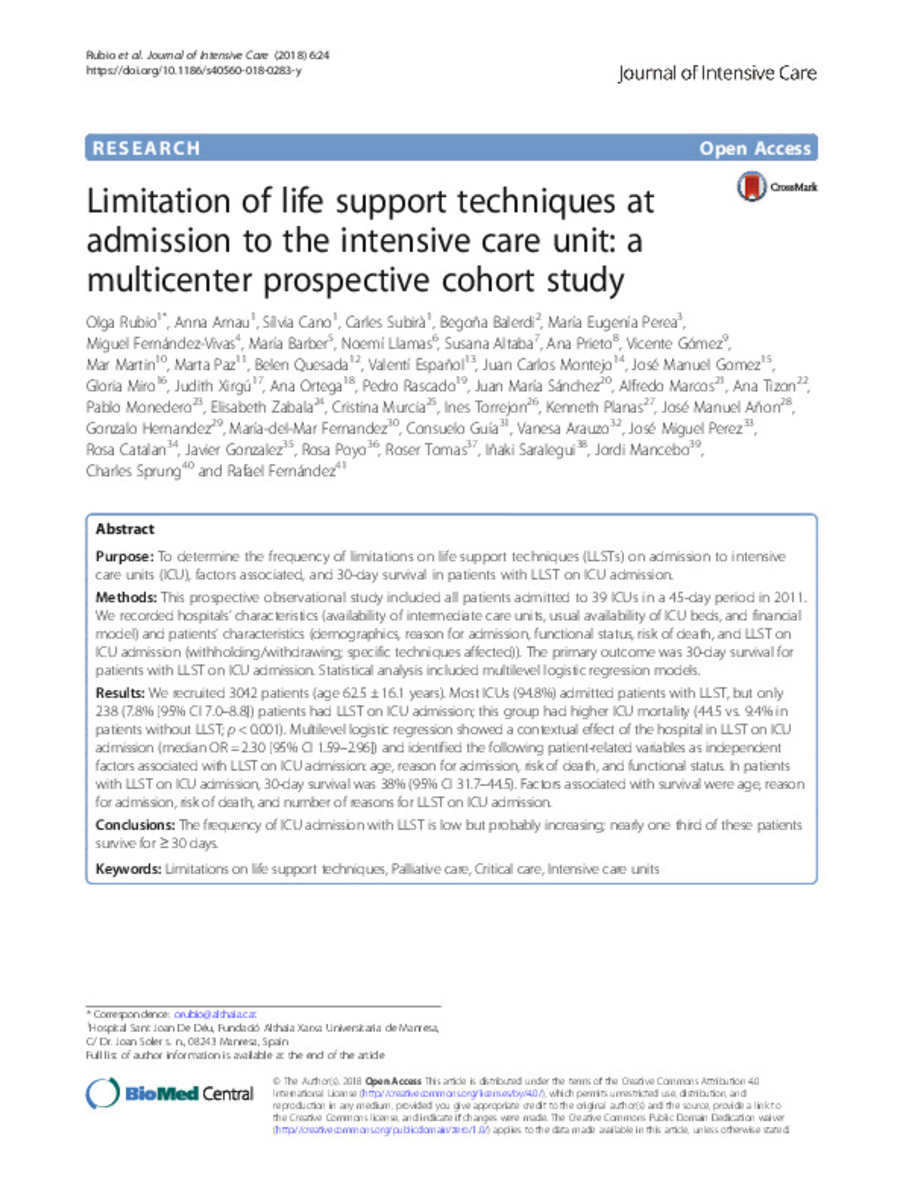Limitation of life support techniques at admission to the intensive care unit: a multicenter prospective cohort study
Keywords:
Limitations on life support techniques
Palliative care
Critical care
Intensive care units
Publisher:
BioMed Central
Note:
This article is distributed under the terms of the Creative Commons Attribution 4.0
International License (http://creativecommons.org/licenses/by/4.0/), which permits unrestricted use, distribution, and
reproduction in any medium, provided you give appropriate credit to the original author(s) and the source, provide a link to
the Creative Commons license, and indicate if changes were made. The Creative Commons Public Domain Dedication waiver
(http://creativecommons.org/publicdomain/zero/1.0/) applies to the data made available in this article, unless otherwise stated.
Citation:
Rubio, O. (Olga); Arnau, A. (Anna); Cano, S. (Silvia); et al. "Limitation of life support techniques at admission to the intensive care unit: a multicenter prospective cohort study". Journal of intensive care. 6, 2018, 24
Statistics and impact
0 citas en

0 citas en

Items in Dadun are protected by copyright, with all rights reserved, unless otherwise indicated.







